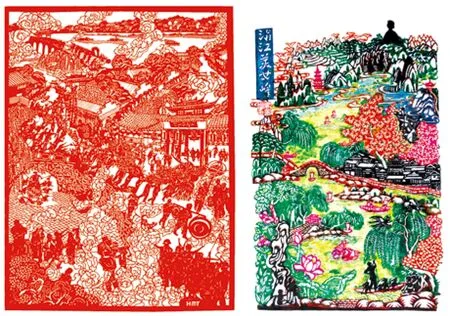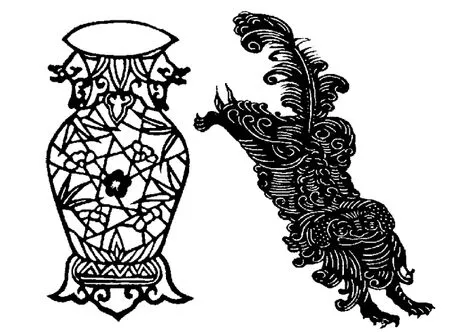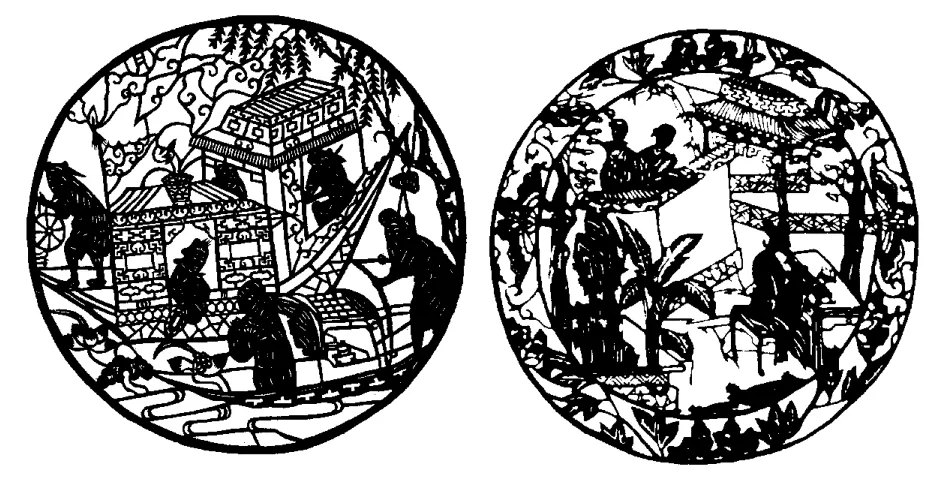Pujiang Paper-cutting
2016-03-18ByWangSijia
By Wang Sijia
Pujiang Paper-cutting
By Wang Sijia
“Sitting on a bench with a pair of scissors, I teach my granddaughter how to cut a piece of paper into flower…” The age-old nursery rhyme that is still sung by many people in Pujiang today vividly illustrates the glamorous paper-cutting tradition of Pujiang, a suburban county in Jinhua of Zhejiang province. Paper-cutting has long been an important part of the locals’ festival celebration, and is used a lot at times of jubilation such as wedding. However, a fine paper-cutting piece takes much more than a piece of paper and a pair of scissors to achieve.
Pujiang has enjoyed cultural distinction since ancient times. The unique paper-cut-ting culture of Pujiang draws nutrition from the county’s fine calligraphy and painting tradition, and colorful folk opera art. The paper-cutting presents a charming quality that goes way beyond functional purposes to reach a profound aesthetic height.

黄盟统作品《江南第一家》(左)、吴善增作品《浦江仙女峰》Two landscape paper-cutting works respectively by artists Huang Mengtong and Wu Shanzeng in Pujiang

阳剪花瓶(左)、阴剪狮子The vase on the left demonstrates the yang technique and the lion on the right shows the yin technique.

剪纸作品:《唐伯虎点秋香》(左)、《西厢记》The two story-telling paper-cutting pieces are made by folk artists of Pujiang.
Basic tools used in the craftsmanship are a pair of sharp-nosed scissors that makes detailed ornamental engraving possible, several pieces of red-colored paper or colored Chinese rice paper, and a pencil for sketching. Sometimes an engraving knife and a baseboard are needed. This Pujiang art presents four essential cutting techniques: yin, yang, yin and yang, and silhouette that focuses on the aesthetic beauty of the contour. Creative use of the four cutting approaches differentiates the Pujiang-style paper-cutting from its peers, making it infinite in variety and rank amongst the finest representatives of the paper-cutting art of China.
Generations of paper-cutting artists in Pujiang have built up a large library of exquisite masterpieces that come handy especially for beginners. Copies can be made through a process called ‘fuming’. An original piece is placed on a blank piece of paper. The two pieces are sprayed wet; the pieces are placed in smoke until the original pattern is copied in black and white onto the blank paper. The originals can be used repeatedly. The large collection of masterpieces as prototypes makes it easy for young paper-cutters to learn from masters and partly explains why the paper cutting masterpieces of Pujiang are of such visual beauty.
What makes the Pujiang paper-cutting most artistically special is its opera figures category. The heyday of the Pujiang folk opera ‘luantan’, in the Qing Dynasty (1644-1911), injected vitality into the art of paper-cutting. The innovative combination of ‘yin’ and ‘yang’ cuts by the paper-cutting artists at the time gave the final products blood and flesh. The result is the unique story-telling quality seen in the elaborate book illustration artistry of the Ming and Qing times of China.
The 85-year-old Wu Shanzeng is reputed the “paper-cutting king’ of Pujiang. In the 1930s-40s, paper-cutting deftness was considered a virtue that made a woman at a marriageable age shine, and paper-cutting works were the icing on the dowry “cake”. Wu started learning the basics at the age of 8 under the tutelage of his mother, and his burning passion for the art has never waned. At an octogenarian age, the man still has a fine eye for colors and steady hands for details. He is an active promoter of the culture, sparing no effort to demonstrate the infinite artistic expressive possibilities of the Pujiang-style paper-cutting to as many people as possible.
“Behind every paper-cutting work there is a story to tell. This is the quintessence of the paper-cutting craftsmanship of Pujiang. Such uniqueness is a great cultural asset we cannot afford to lose,” said the master affectionately.
Some people think paper cutting is ‘unsophisticated’, intuitional and self-entertaining. They are mistaken. In fact, it takes superb skills to make every cut flawless; it takes artists years’ of practice, quiet passion, dedication to make elaborate, story-telling patterns. It is these rural artists that have made Pujiang into a wonderland of paper-cutting.
